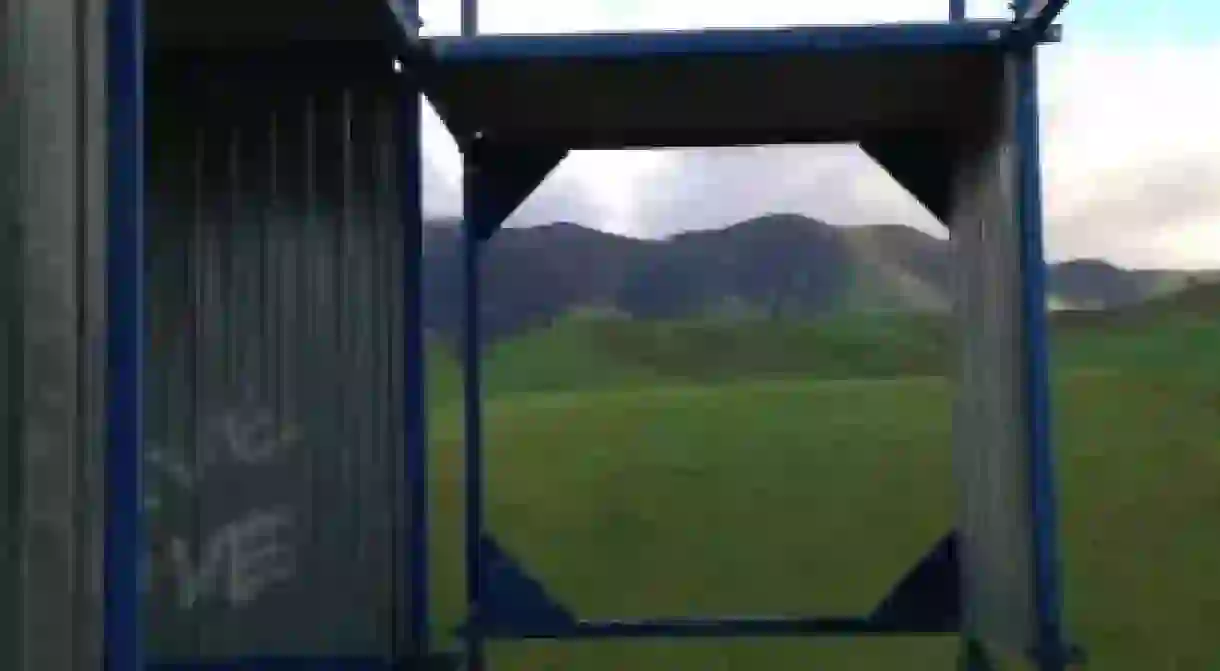California's Central Coast Explores the Architecture Graveyard

In the hills of San Luis Obispo, amongst the trappings of unassuming staff parking lots and Cal Poly dorms, sits the trailhead for the Architecture Graveyard. Just a jaunt from asphalt to forest floor, a stone archway marks the entrance into a beloved, student-run experiment of Architecture and Environmental Design which spanned over four decades: an entire canyon dotted with bizarre architectural structures.

When the first building was constructed in Poly Canyon in 1963, the Architecture Graveyard was known as the Architecture Village. Although the most recent work dates to 2009 — when students renovated a massive blue and silver steel-trussed cube called the Stick Structure —the village is no longer developing. Bureaucratic red tape and lack of funding due to the financial crisis caused the whimsical edifices to fall into disrepair, earning it the moniker Architecture Graveyard. Once a year though, the canyon buzzes with life again, when students host a festival-esque, pop-up competition where innovative creations are built amongst the fossils of their architectural ancestors. Sadly, these structures are temporary and are dismantled soon after they’re constructed.

An oddly harmonious collection of miniature houses and geometric structures, the Architecture Graveyard conjures images of an apocalyptic playground, located somewhere between Hobbiton and Woodstock. Lush grasses carpet the ground around a triangular platform, jutting out from the hillside like the prow of a wrecked ship. In the distance, the Serenity Swing hangs from a lone tree, the final destination for another beloved Cal Poly hike. Just behind the Modular House —what once was student tenants’ housing, now covered in highway-sign detritus — grazes a herd of mink-coated horses. Paintings and graffiti dialogue across the walls of the Shell House, one of the most striking structures in the village. Repeatedly rebuilt throughout the 1970’s, the Shell House is a spiraling shelter complete with a wood-burning hearth and a stained-glass-ceilinged loft. Seemingly inspired by this early innovation, a smaller circular house sits further up the hill, rounded entryways framing the lush landscape beyond.

The view of the surrounding valley from the canyon is draw enough, but the opportunity to scale the sides of the geodesic dome or look out over the vast canyon from atop the observation deck, pulls at the latent child in all of us.

At an easy 1.5 to 3 mile loop (depending on which trails you take) the Architecture Graveyard is a perfect destination to share a beer atop oversized concrete lattice-work, go on that casual cross-country run you keep meaning to, or simply play, unfettered, amongst the clubhouses we all wish we had back in the day.

How to Get There
From Los Angeles, the Cal Poly Design Village is a straight shot up the 101. On your way North, you may want to stop on Main Street in Ventura for some of the best thrifting SoCal has to offer, grab a ‘magic bowl’ at The French Press in Santa Barbara or a kringle from Olsen’s Danish Bakery in Solvang. While you’re in San Louis, stay at the Madonna Inn, and be sure to have a bread bowl at the original Splash Cafe in Pismo Beach.
Located on the Cal Poly campus, the trailhead for the Architecture Graveyard hike lies off Poly Canyon road, a little over half a mile past Village Drive. Parking is free on weekends, and $5 all-day for visitors on weekdays. The closest lot to the trailhead is H4, on the corner of North Perimeter Road and Village Drive.
If you’ve got more time to spare, continue on to Cambria and Hearst Castle, only a half hour further on the 101 North. In the spring, elephant seals make their rather sedentary and majestic migration to the beaches surrounding that area, and are worth a visit, if just for a humorous accompaniment to the breath-taking beauty of the coast.













